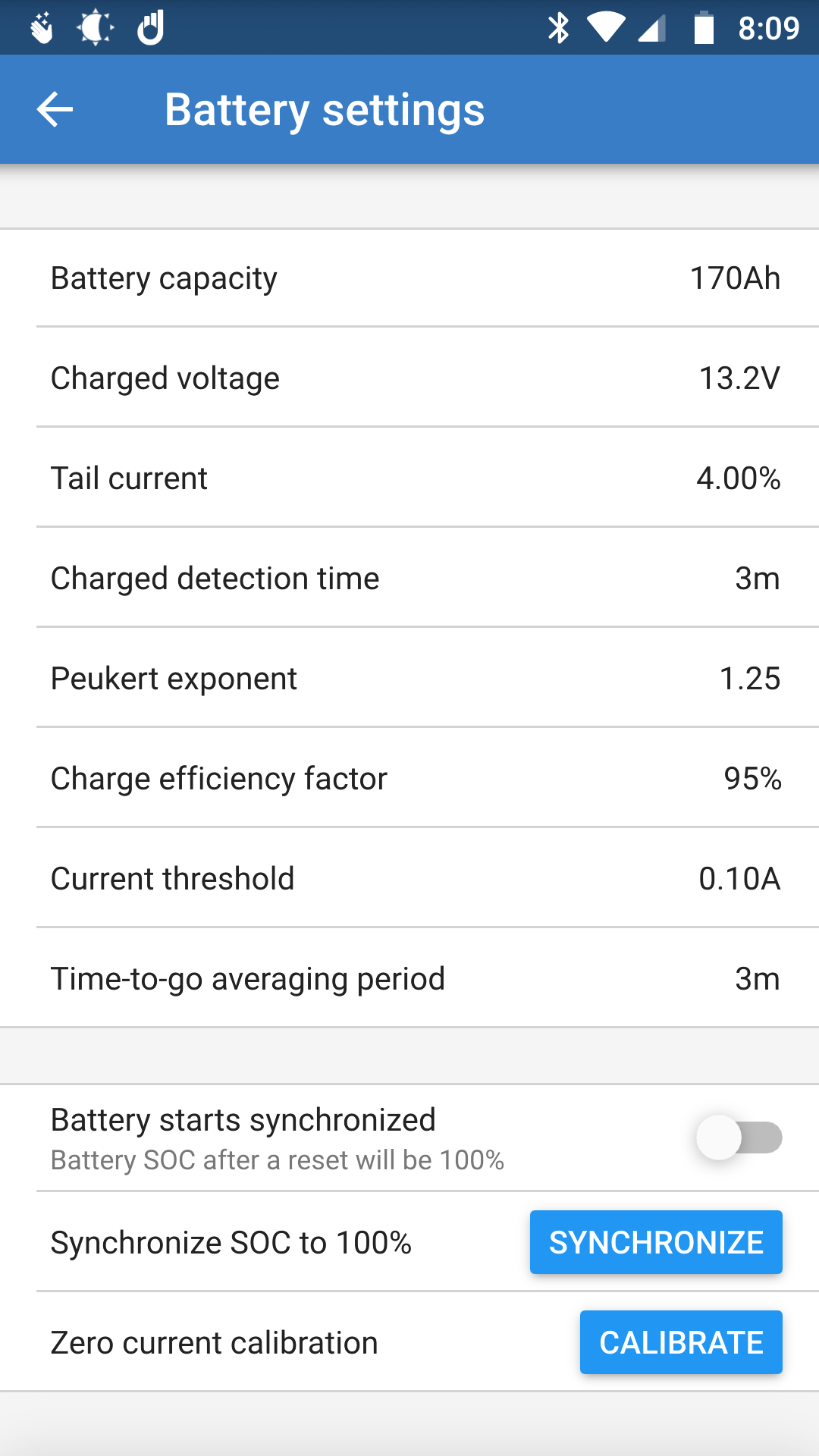Hello. I just installed a BMV-712 (with temp probe) in a travel trailer that has 2 Costco flood batteries (link) in parallel which are about a year old and well maintained. After resetting the SOC to 100% (the trailer was plugged in for a week, no appreciable current), I unplugged the trailer and let the SOC run down to 90% over 1.5 days with a light load (lights, fan).
I then plugged the trailer back in to see how long I'd have to run my generator in the future to regain the lost 10% capacity. After only about 75 minutes, the BMV-712 reported an SOC of 100%, but the current was still showing ~+7A (gradually tapering downward), which indicates that the battery is still charging, and in fact not at SOC=100%.
I assume that something is wrong with my battery definitions.... the manual doesn't explain how to choose the correct numbers, so I did the best I could (see attached screenshot). The Costco page didn't have many specs, so I assumed that the equivalent Interstate battery is this one: (link).
I'm most interested in setting the right battery parameters for getting an accurate SOC value so that I never drop below 50%. Also, I'd like to know how long I'd need to run a generator during the day to regain recent losses (I don't see a "time to go" value on the app). Finally, I assume the "time remaining" value is for SOC = 0%, so I should always cut it in half for "time remaining" to SOC=50%?
Thank you for your help.

